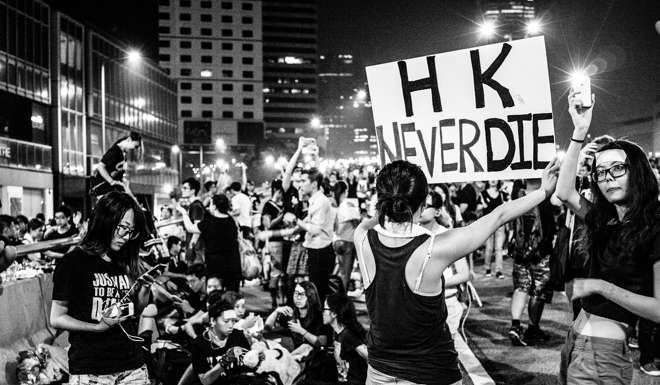
Filipino photographer recalls tensions and humanity of Hong Kong’s 79-day Occupy movement
Xyza Bacani was a domestic helper by day and photographer by night as she recorded the twists and turns of the protest movement
Many still remember the clouds of tear gas fired at protesters on Connaught Road Central on September 28, 2014. Images of thousands of people holding umbrellas and resisting police officers in full riot gear are still fresh in the memory of those who followed the 79-day Occupy movement.
Xyza Bacani, 29, a former domestic helper from the Philippines who lived in Hong Kong for 10 years, captured many of those scenes with a small camera, but the most remarkable memory she retains from Occupy is not tinged with violence or tension.

In a short visit to the city, Bacani, who won the 2015 Magnum Foundation Human Rights Fellowship, which paid for a six-week photography course at Tisch School of the Arts in New York, told the Post how she experienced the 79-day protest, as the movement that called for “genuine” universal suffrage in Hong Kong turns two on Wednesday.
‘Thousands of people’

“It’s very nostalgic every time I come back here and I go by taxi along Connaught Road. It looks so different,” she said, recalling the days when the highway was full of tents, supply stations and thousands of people.
I first saw a man running with the police on his back, then I went down and saw many officers and people throwing things
Bacani was working when the Occupy movement was launched in the early hours of September 28 and when, later in the day, tear gas was fired at thousands of protesters. “It was very surreal. This is not Hong Kong, I thought. It was happening on TV and we – my boss and I – started calling everyone to know if they were safe,” she recalled. “Connaught Road had become a sea of people. The cars were gone and people were occupying the streets,” Bacani said.
‘Tear-gassed with protesters’
At the end of her working day and as tensions were still running high in Admiralty, Bacani went down from Garden Road to Connaught Road Central.

“At first I was shocked by the number of police officers. When you live here you don’t feel their presence as much,” she said. “I first saw a man running with the police on his back, then I went down and saw many officers and people throwing things,” Bacani said.
She hadn’t imagined that such large protests would take place in Hong Kong. “After the initial shock, I got into the photographer mode. I was on the frontline, got tear-gassed, was with the protesters ... I was there until the morning and came down on many nights,” she said.
They might have been on two different sides, but they were all Hongkongers
As the movement unfolded, Bacani was a domestic helper during the day and a photographer at night. “I was always tired. Very sleepy in the morning ... I had to drink like five cups of coffee every day,” she said.
“But I really enjoyed photographing in the evening, because you would see many of the protesters turning kids again, hanging out with their girlfriends, doing normal things,” she said.
Of all the memories, one sticks in her mind: “It was a moment in Mong Kok, where despite the tension, I saw police officers and protesters laughing together for a bit ... They might have been on two different sides, but they were all Hongkongers and, at the end of the day, human beings.”
‘They were heard’

Protesters might not have been able to achieve their main aim – genuine universal suffrage for choosing the chief executive in 2017 and the entire Legislative Council in 2020 – but Bacani maintained the movement was worthwhile: “They were able to say something and they were heard. Change will not happen in 79 days, but they voiced out their thoughts,” she said.


